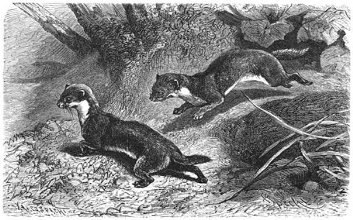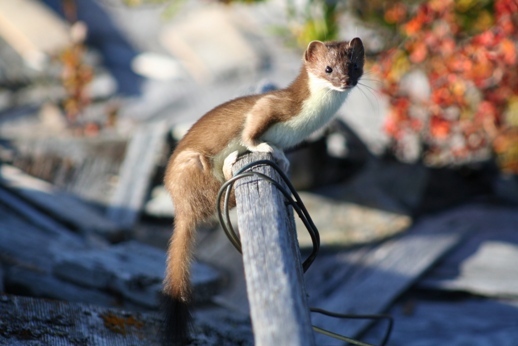Male Vs. Female
Sexual dimorphism is a key component in the lifestyle of Mustela nivalis. The males become noticeably larger after 6 weeks of being born. The size difference affects their prey capturing abilities along with the space they occupy. The males larger size enables them to eat different prey, but also prevents them from capturing potential prey items hiding in small burrows. Females would be at an advantage of tackling the prey inside the burrow holes. This selection reduces prey competition between the male and female Least Weasels. Since the male is significantly larger, it needs more space therefore their habitat is slightly larger.
There are few significant conclusions as to why weasels exhibit
sexual dimorphism practically their whole life. One reasoning
involves the females ability to give birth. As a mother, their
job is to provide milk for the newborns nourishment and by having a
smaller body size, not as much energy needs to be expended in order
to produce milk for the baby weasels.
Unfortunately weasels usually die before they reach adulthood. They are either made into prey or die from malnutrition.
For more information on the Life of a Weasel go to http://www.biokids.umich.edu/critters/Mustela_nivalis/
 Walk with the weasel to interact with friends...or enemies
Walk with the weasel to interact with friends...or enemies

